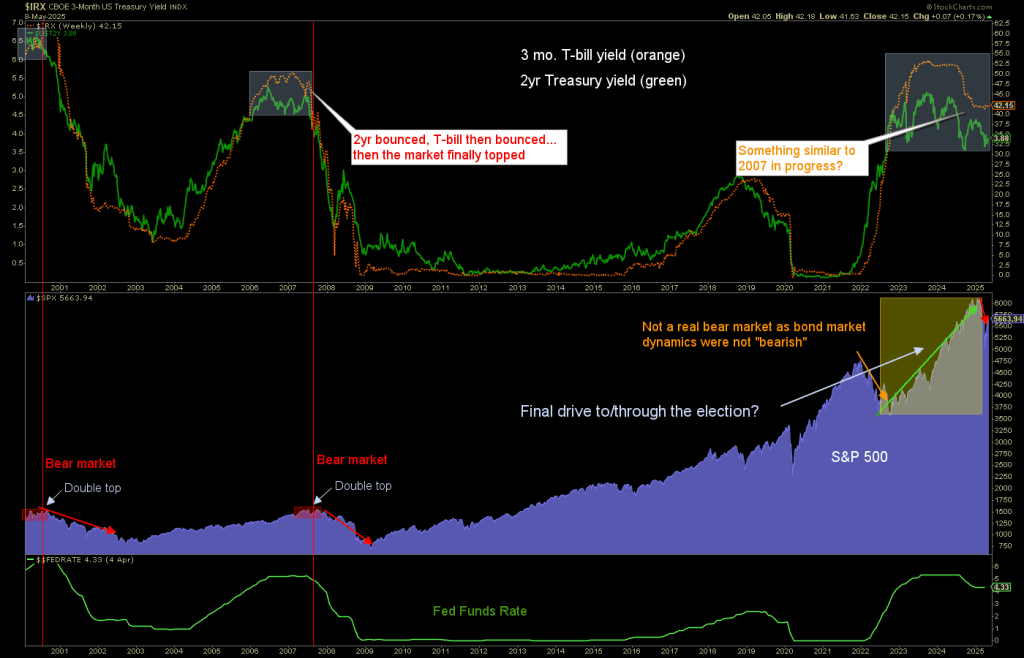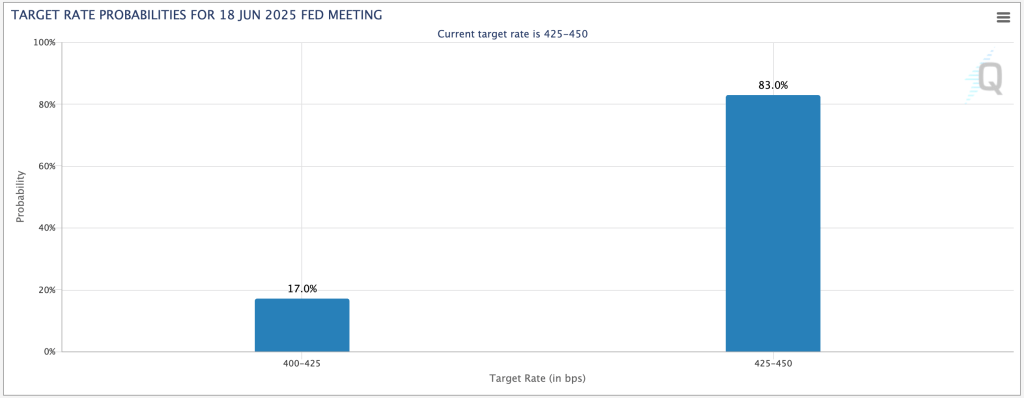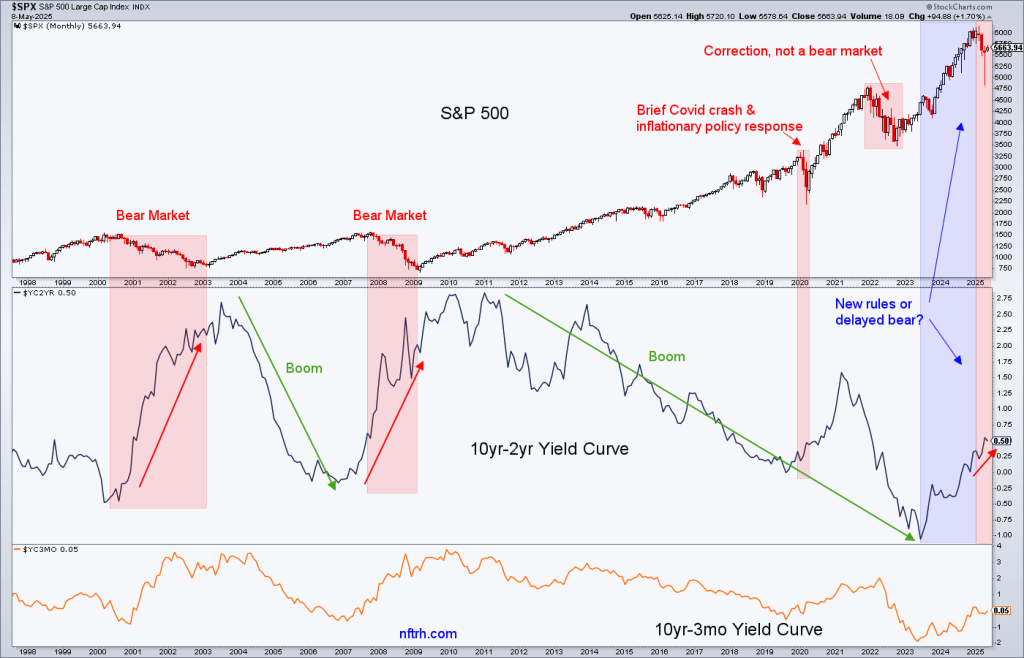The question I have is whether the toxic global trade backdrop will help pivot the economy over the edge before prices have a chance to rise appreciably. That would be the “deflation first” scenario. This scenario would bring the father of US tariff policies to his knees, eventually.
However, if the economy continues to limp along and not overtly antagonize and persecute Trump for his trade policies, we could go Stag sooner, not later.
Thing 1 (deflationary resolution) is near-term and decisive economic death.
Thing 2 (stagflationary resolution) is frogs swimming in a kettle of gently warming water.
Currently I am about 50/50 and ready for a deflation scare, but also prepared for a stagflationary phase that could see gold as having been its leader (as it tends to be before overtly obvious inflation makes the scene), silver take up the fight, and a whole raft of commodities – led by the most critical and globally strategic – start to cycle up while the stock market flatlines (biased up or down). In other words, a sort of 1970s playbook, only worse.
Per the previous article:
“In my view, higher tariffs could lead to disruption to global supply chains and create persistent upward pressure on inflation,” he said, noting that it will take time for businesses to reroute distribution networks. Some suppliers, particularly small businesses, may not be able to adapt quickly enough and could fail, he said – adding to supply chain tangles.
Said disruption could also easily instigate deflationary pressure as the global economy seizes up in some areas. If 2020’s COVID era economic shutdowns caused deflation, why might not the delays and snags caused by trade disarray also bring on a deflationary phase prior to the next inflationary phase?
“I am equally concerned that tariffs will lead to higher unemployment as the economy slows,” Barr said. “Thus, the (Fed) may be in a difficult position if we were to see both rising inflation and rising unemployment.”
Again, opposite sides of the same seesaw. Or what comes first, the chicken or the egg? Or is the cart before the horse? In other words, will inflation fears trigger deflation or skip that step and go right to Stagflation?
It is possible that the Fed sees the whites of inflation’s eyes and holds too long before cutting rates. That could trigger a big slide in asset markets and the economy. This is the scenario that would put enormous political pressure on Trump. Fear of inflation, leading policy, which leads an economic meltdown, which leads to a liquidity crisis.
If we proceed directly to the Stag, it would be more of a grind, probably with enough remaining economic juice in certain very discrete areas like critical minerals and materials, energy and war machines to keep up appearances to a degree. In other words, it could for a while be spun as taking some pain on the way to Trump’s ultimate “beautiful” economy.
It won’t be beautiful, though. It will be painful and ultimately destructive of society (which needs no more destruction than it’s already taken) as captains of very select industries prosper and the average person suffers from the classic stagflationary vice grip of rising prices and decelerating economic prospects on the whole.
Want a bottom line to all of this? Okay…
The
Pooch
Is
Screwed… either way.
The stock market is on a relief rally. It was predictable (we well anticipated it week after over-bearish week in NFTRH), given the deplorably bearish sentiment profile of March and April. It is likely a false dawn, and the Fed cutting rates will not help. History tells us that when the Fed cuts, that is when bear markets begin.
Once again a note that the above is not written by a perma-bear. I am not (yet) short any broad stock market positions and have several long positions for this “hope” trade.
 In line with current inflation (stagflation) sentiment, CME Group (NASDAQ:) has now adjusted its view from a majority anticipating a June rate cut to (Trump, avert your eyes) 83% anticipating a rate hold. CME wise guys, reactionary rather than predictive as they are, have pushed out the first cut to July, and even then it’s no gimme.
In line with current inflation (stagflation) sentiment, CME Group (NASDAQ:) has now adjusted its view from a majority anticipating a June rate cut to (Trump, avert your eyes) 83% anticipating a rate hold. CME wise guys, reactionary rather than predictive as they are, have pushed out the first cut to July, and even then it’s no gimme.
If the 2yr negatively diverges and continues to drop more than the 10yr yield, the yield curve steepener currently in progress will prove deflationary. If not and long-term yields start to rise harder, we go inflationary, or much more likely, stagflationary.
 A lot of details, but it’s not rocket science.
A lot of details, but it’s not rocket science.Get ready for negative outcomes one way or the other once the rally in hope peters out. The art will be in how to navigate the options for two very different forms of economic pain. Therefore you need to understand the vast differences between two potential outcomes.
